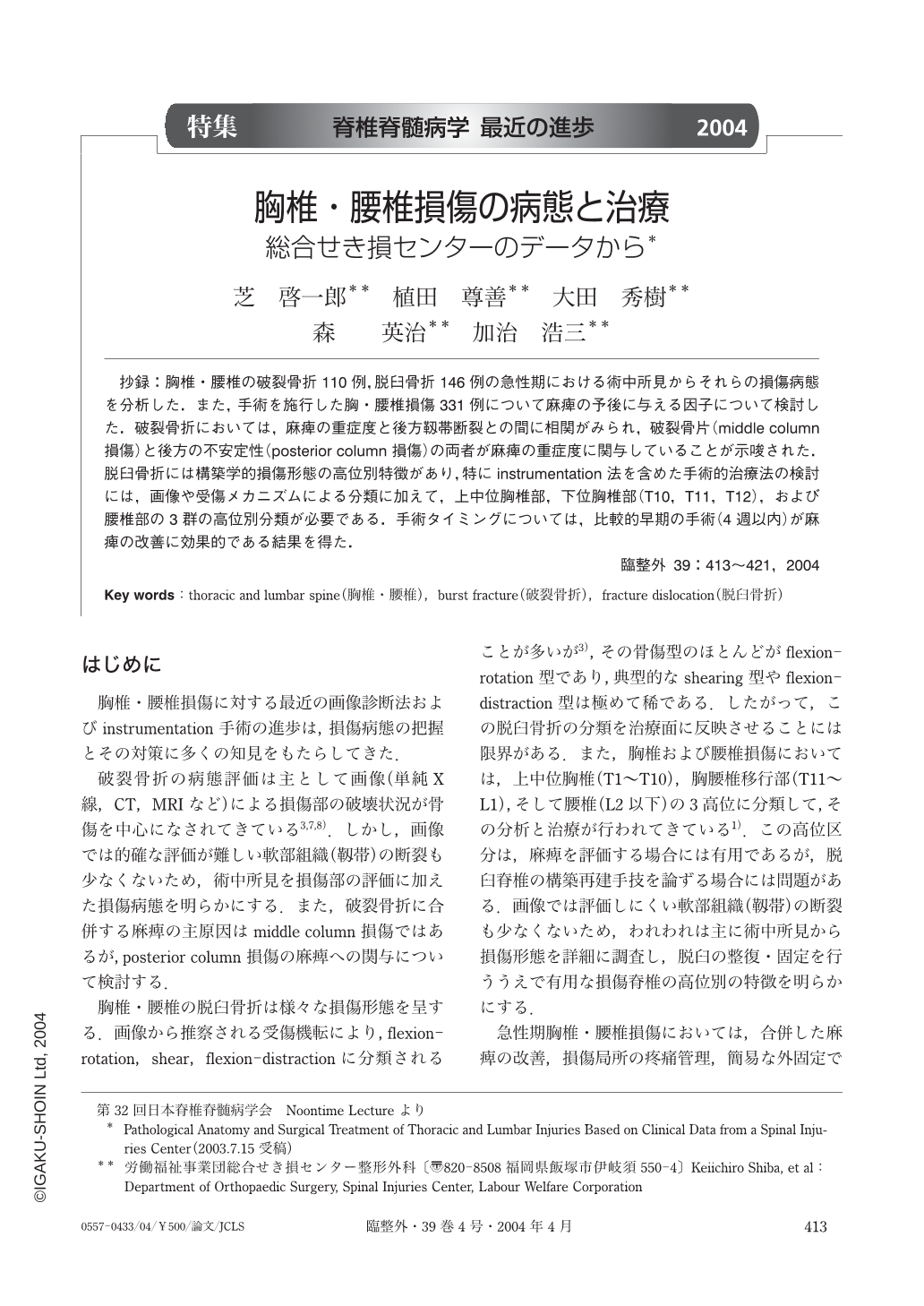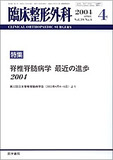Japanese
English
- 有料閲覧
- Abstract 文献概要
- 1ページ目 Look Inside
抄録:胸椎・腰椎の破裂骨折110例,脱臼骨折146例の急性期における術中所見からそれらの損傷病態を分析した.また,手術を施行した胸・腰椎損傷331例について麻痺の予後に与える因子について検討した.破裂骨折においては,麻痺の重症度と後方靱帯断裂との間に相関がみられ,破裂骨片(middle column損傷)と後方の不安定性(posterior column損傷)の両者が麻痺の重症度に関与していることが示唆された.脱臼骨折には構築学的損傷形態の高位別特徴があり,特にinstrumentation法を含めた手術的治療法の検討には,画像や受傷メカニズムによる分類に加えて,上中位胸椎部,下位胸椎部(T10,T11,T12),および腰椎部の3群の高位別分類が必要である.手術タイミングについては,比較的早期の手術(4週以内)が麻痺の改善に効果的である結果を得た.
The three-column features were observed in 110 thoracic and lumbar burst fractures treated by an one-staged anterior-posterior approach. The incidence of complete disruption of the posterior ligamentous complex was 38% (42/110), and there was a close correlation between the grade of neurological deficit and posterior ligamentous disruption. Disruption of the posterior ligamentous complex plays an important role in the neural damage as well as spinal stenosis caused by burst fragments, especially in the acute phase. In burst fractures associated with a vertical lamina fracture (25%:28/110), it was not unusual for posterior dural lacerations to be caused by impact on the dural sac (15%:17/110).
To clarify the pathologic anatomy of thoracic and lumbar spine fracture-dislocations, the case records of 146 patients who had been treated surgically were examined. Most of the shear-fracture dislocations were distributed in the upper-and mid-thoracic spine (T1 to T9), and the flexion-rotation type was more common in the lower thoracic spine (T10 to T12) and the lumbar spine (L1 to L4). The forces used for on the basis of stabilization, including both distraction and compression, should be applied the pathological anatomy.

Copyright © 2004, Igaku-Shoin Ltd. All rights reserved.


